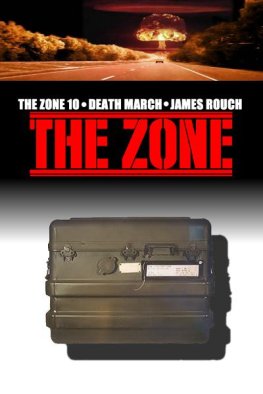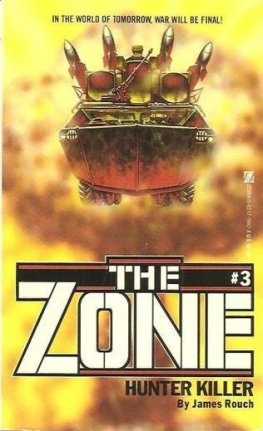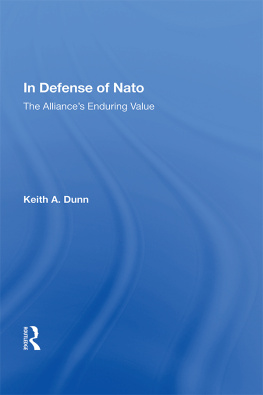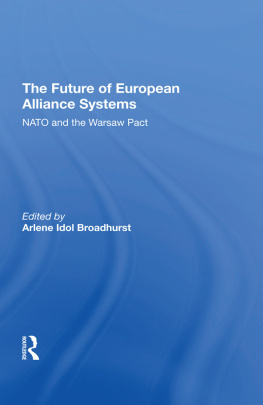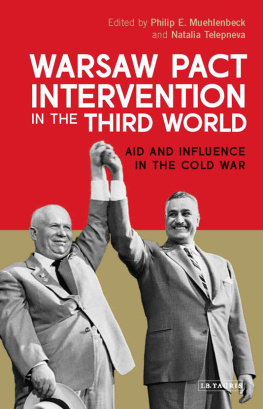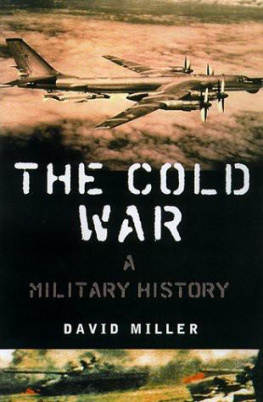Mary Ann Heiss - NATO and the Warsaw Pact: Intrabloc Conflicts
Here you can read online Mary Ann Heiss - NATO and the Warsaw Pact: Intrabloc Conflicts full text of the book (entire story) in english for free. Download pdf and epub, get meaning, cover and reviews about this ebook. year: 2008, publisher: The Kent State University Press, genre: History. Description of the work, (preface) as well as reviews are available. Best literature library LitArk.com created for fans of good reading and offers a wide selection of genres:
Romance novel
Science fiction
Adventure
Detective
Science
History
Home and family
Prose
Art
Politics
Computer
Non-fiction
Religion
Business
Children
Humor
Choose a favorite category and find really read worthwhile books. Enjoy immersion in the world of imagination, feel the emotions of the characters or learn something new for yourself, make an fascinating discovery.

- Book:NATO and the Warsaw Pact: Intrabloc Conflicts
- Author:
- Publisher:The Kent State University Press
- Genre:
- Year:2008
- Rating:5 / 5
- Favourites:Add to favourites
- Your mark:
NATO and the Warsaw Pact: Intrabloc Conflicts: summary, description and annotation
We offer to read an annotation, description, summary or preface (depends on what the author of the book "NATO and the Warsaw Pact: Intrabloc Conflicts" wrote himself). If you haven't found the necessary information about the book — write in the comments, we will try to find it.
Essays on Cold War tensions within NATO and the Warsaw Pact
There is no shortage of literature addressing the workings, influence, and importance of NATO and the Warsaw Pact individually or how the two blocs faced off during the decades of the Cold War. However, little has been written about the various intrabloc tensions that plagued both alliances during the Cold War or about how those tensions affected the alliances operation. The essays in NATO and the Warsaw Pact seek to address that glaring gap in the historiography by utilizing a wide range of case studies to explore these often-significant tensions, dispelling in the process all thoughts that the alliances always operated smoothly and without internal dissent.
The volume is divided into two parts, one on each alliance. An introductory essay by S. Victor Papacosma spells out the themes addressed in the individual essays and the volumes coherent historiographical contribution. They include, but are not limited to, military and political matters, the consequences of World War II for the non-Western world, the role of individuals in shaping historical events, and the unintended consequences of policy choices and developments.
The international group of contributors brings to bear considerable policymaking and academic experience. In approaching the Cold Warera alliances from a new angle and in drawing on recently declassified documentation, this volume adds to the literature in recent international history and will be of interest to scholars in such fields as U.S. foreign relations, European diplomatic history, and security and defense studies, among others.
Visit the Parallel History Project on Cooperative Security site for more information and news related to NATO and the Warsaw Pact.
Mary Ann Heiss: author's other books
Who wrote NATO and the Warsaw Pact: Intrabloc Conflicts? Find out the surname, the name of the author of the book and a list of all author's works by series.

